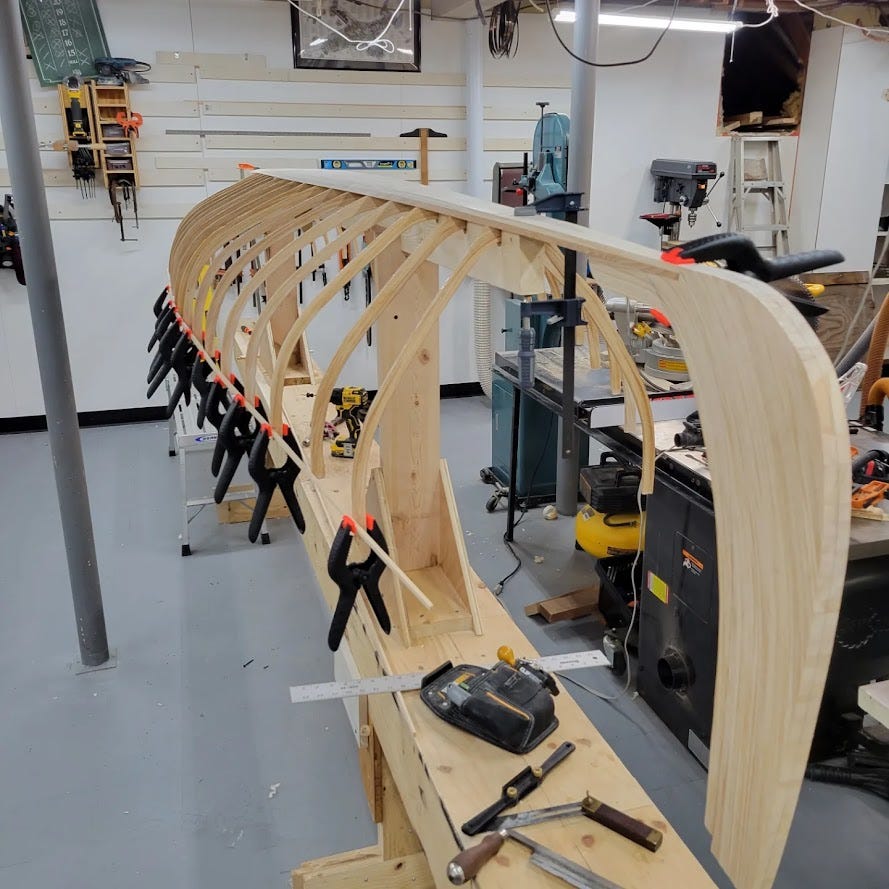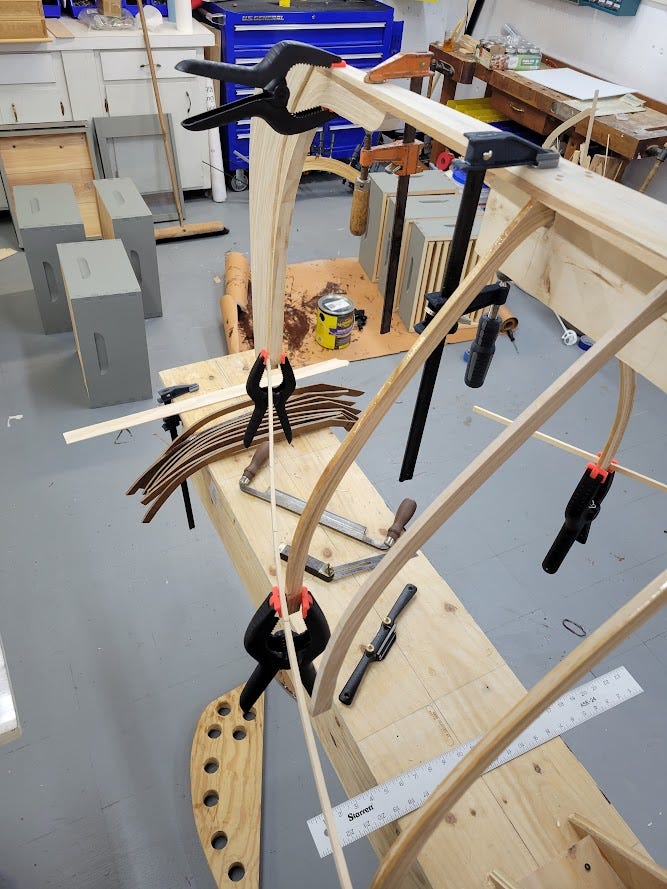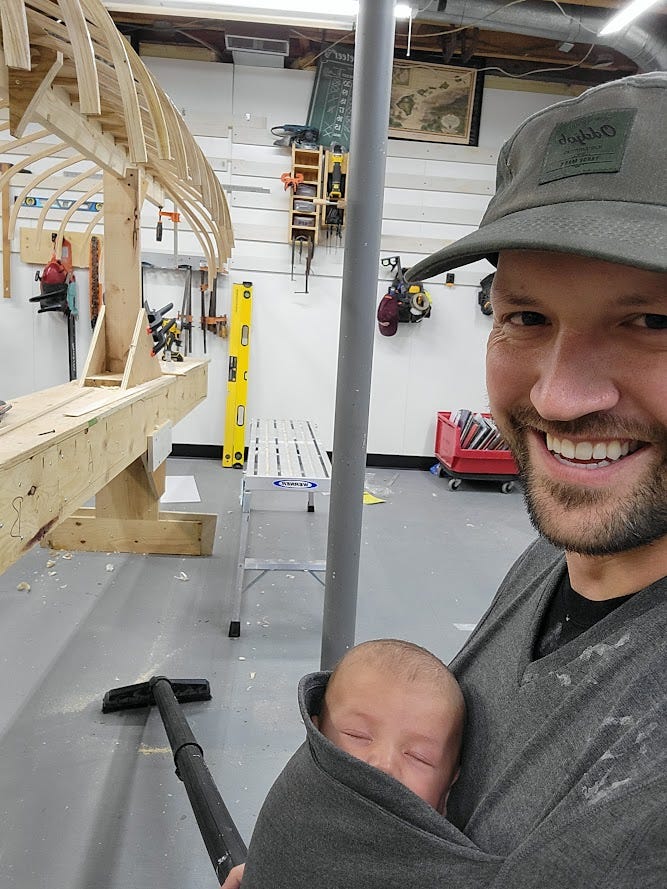We left off having attached the ribs, and I went out of order when I discussed making the stems of the boat, and attaching those. The ribs and stems are attached only with brass screws, no glue was used.
It’s now time to do the layout for the sheerline, a boat word for the top of the side of the boat. A gunwale (pronounced “gunnel”) is an additional strip of wood that is added to reinforce the top edge, and will be added after the boat has been stripped, sanded and painted. I tend to mumble through these boat works quickly and as if i have a mouthful of marbles because I don’t really have the experience to talk as if I know what I’m talking about.

This is where my woodworking experience of basically making boxes and platforms gets thrown out, because now you’re winging it by eye. Nothing is straight, nothing is 90 degrees. Only two things really matter: That the Bottom Board is completely level (horizontal) and the stems are perfectly plumb (vertical). Everything else just needs to look right.
From my plans, I know where the sheerline should be at each rib station, so I clamp a batten strip at that point. If the ribs are installed too far forward, or too far backwards causing the sheer line to wave in and out of the boat, they are adjusted. If the sheerline has a “bump” in the line up or down, the lathe is adjusted until the sheerline is “fair”.
Again, you don’t need any training to see if a line is not right. It simply doesn’t look right. It’s what to do to make the line fair that gets complicated.


We’re now set to place our first strip over top the batten, and start stacking and gluing strips until we have something that resembles a boat. Next time we’ll review what bead and cove cedar strips are, the species used, and we’ll get stripping.





love this. amazing work and really appreciate you taking us along with you! Wonderful job. Can't wait to see it one day.